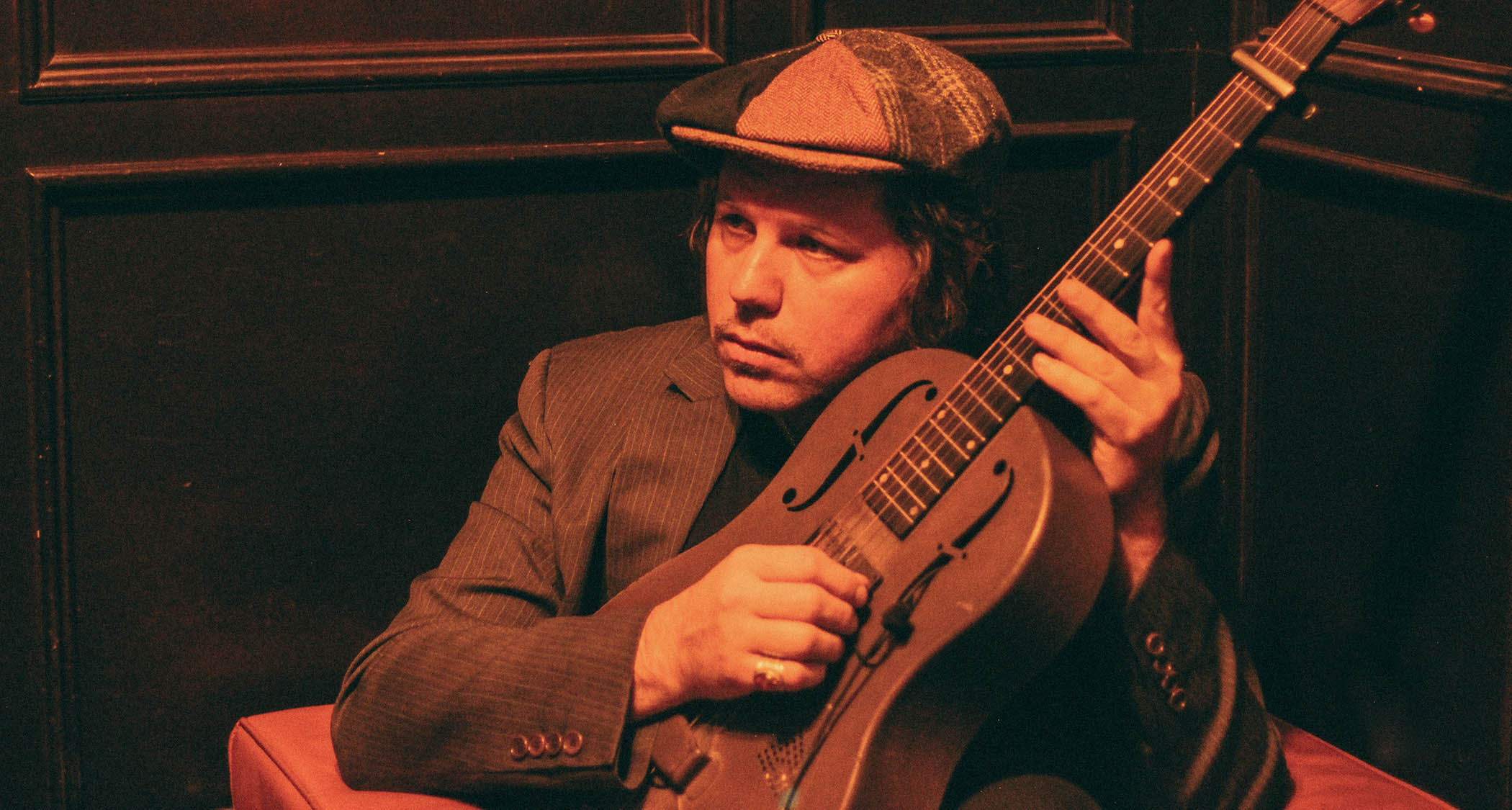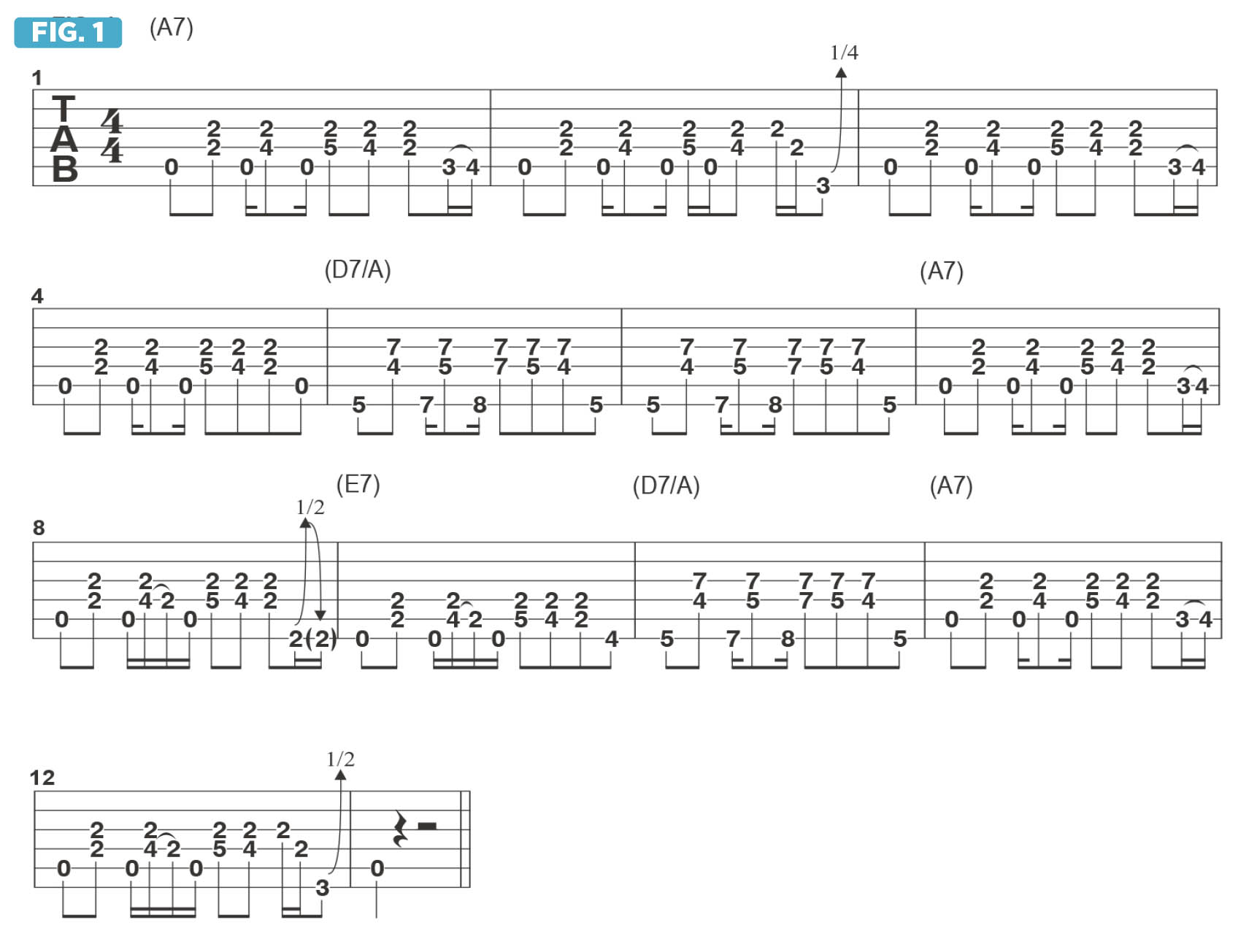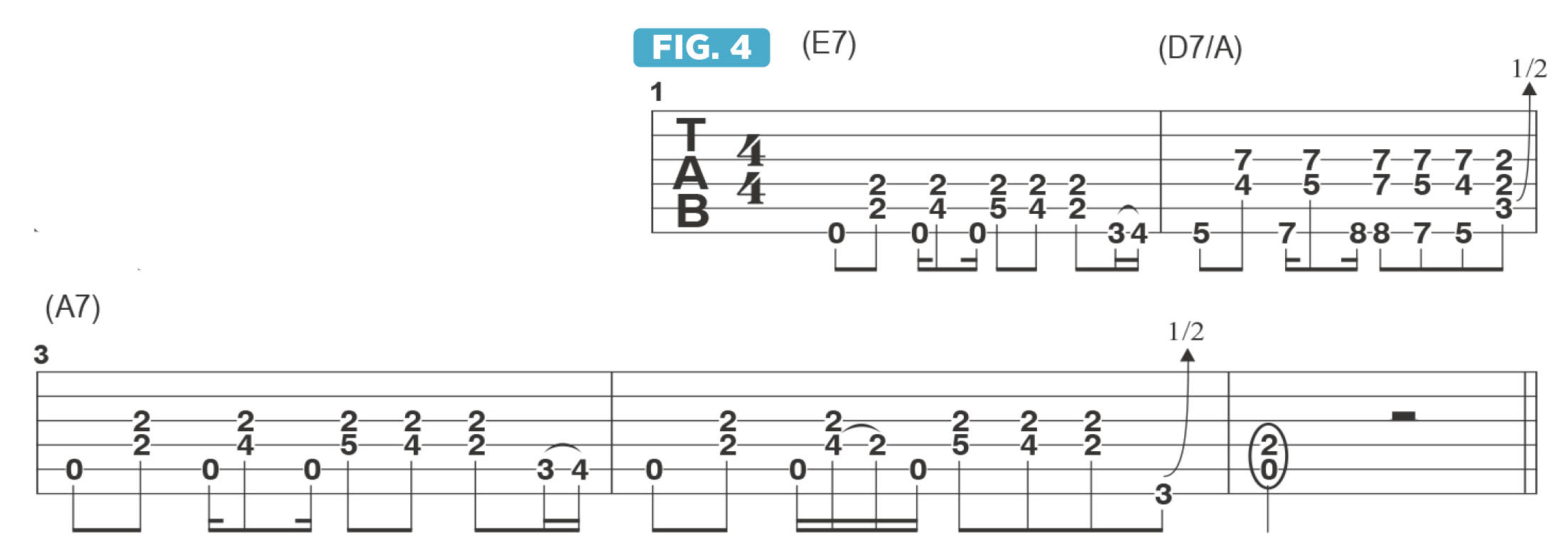
Hello, everyone, and welcome to my new Guitar World column! Over the course of these lessons, I look forward to demonstrating many of my favorite approaches and techniques that I rely on for rhythm guitar and soloing.
Stylistically, I’m a big fan of everything from classic Chicago blues to country, western swing, jazz and more, and it has become natural for me to draw on elements of all of these different styles in performance and recording situations.
I’d like to begin by offering a cool country/blues-style fingerpicked rhythm guitar part that’s played over a “train beat” which is so named because of the incessant repeating accents a drummer would play on the snare drum that resemble the “chugging” of pistons on a fast-moving locomotive.
In 44 meter, these accents are played as 16th notes; in 22 meter, also known as “cut time”, these accents are eighth notes. The examples in this column are illustrated in 44, so the parts are written with combinations of eighth and 16th notes.
Figure 1 illustrates a standard I - IV - V (one - four - five) 12-bar blues form in the key of A. In this key, the I (one) chord, or tonic, is A, the IV (four) chord is D, and the V (five) is E.
I fingerpick this rhythm part, using a thumbpick to strike the lower strings while fingerpicking the higher strings with my index and middle fingers.
If you prefer to use hybrid picking – combining fingerpicking and flatpicking – the low strings are sounded with the pick and the higher strings can be fingerpicked with the 2nd-4th fingers (middle, ring and pinkie).

In bars 1-4, I start with my fret-hand index finger barred across the D and G strings at the 2nd fret and ascend and descend on the D string, moving between the 2nd, 4th and 5th frets.
Notice that each measure ends a little bit differently as the lick is repeated in the subsequent bar. Figure 2 offers a more detailed look at this rhythm part.

In bars 5 and 6 of Figure 1, I switch to the IV (four) chord by first playing D/A, with a low A note fretted on the 6th string at the 5th fret and F# and D played on the 4th and 3rd strings, respectively.
On beat 2 into beat 3, the notes on the 6th and 4th strings ascend while the high D note on the 3rd string remains stationary with each voicing. Figure 3 focuses on these chordal shapes.

After the return to the initial figure over A in bars 7 and 8 of Figure 1, I move to the V (five) chord, E7, in bar 9 and play an identical figure to that of bar 1 but moved down to the bottom three strings. I then return to D/A and resolve back to A in bar 11. Figure 4 focuses on these four bars.

This rhythm part is not all that different from a standard “Jimmy Reed” type of chordal figure, where a root note is alternately played against the 5th, 6th and flatted 7th notes; this is the basis of the classic Chuck Berry “rock and roll” rhythm guitar accompaniment style.
To make this part effective, it’s essential to accentuate the syncopated feel of the 16th- and eighth-note upbeats throughout the fingerpicked part.







